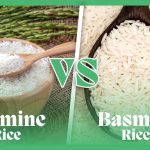When it comes to breakfast options, Cream of Wheat and Oatmeal are two substantial options that frequently grace our tables. Both have become a part of our daily routines, providing cosy warmth and a fulfilling beginning to the day. A traditional morning option is Cream of Wheat, a creamy and adaptable hot cereal made from wheat semolina. Conversely, oatmeal, which is derived from oats, has a standing as a healthy and high-fiber choice.
To streamline the decision-making process and match readers’ tastes with their health and well-being objectives, this article compares the nutritional qualities of oatmeal with cream of wheat. Through profile comparison, readers may choose which hot cereal best fits their morning schedule.
What is a cream of wheat?
A warm embrace for your breakfast bowl is what Cream of Wheat is like. Made from ground wheat, it’s a warm, creamy cereal that gives you a pleasant start to the day. Imagine it as the smooth perfection that makes your mornings enjoyable.

Nutritional profile of cream of wheat:
Cream of Wheat has a comforting and nourishing nutritional profile. This hot cereal, which is mostly made of wheat semolina, is high in complex carbs and gives you a constant, rapid energy boost to start the day. It provides a modest quantity of proteins, helping the preservation of muscle, although having little fat.
Furthermore, Cream of Wheat is frequently fortified with vital vitamins and minerals including iron and calcium, as well as B vitamins (riboflavin, folate), to improve its nutritional value. Cream of Wheat is a delicious breakfast option that is high in nutrients and a pleasant combination of warmth and vitality with extra features.
What is oatmeal?
The morning hero is oatmeal! It’s like giving your taste receptors a big high five. It’s a nutritious, high-fibre powerhouse made from oats that gives you consistent energy for the morning. Breakfast is more than simply food; it’s your tasty shot of inspiration in the morning.

Nutritional profile of oatmeal:
A breakfast staple, oatmeal packs a nutritious punch for your morning routine. It is well known for its high fibre content, which helps to feel full and supports digestive health. It is made from oats.
In addition to providing complex carbs for long-term energy, oatmeal also has a surprising amount of protein, which makes it a great choice for vegetarians. Rich in minerals like iron, magnesium, and phosphorus, as well as vitamins, especially B vitamins (thiamine, niacin), oatmeal provides a complete nutritional package. This healthy breakfast option has a bonus because its soluble fibre, beta-glucans, has been linked to heart health benefits.
Let’s look at Marvel’s Wheat and Oatmeal’s nutritional profile.
| Nutrient | Cream of Wheat (100g) | Oatmeal (100g) |
|---|---|---|
| Calories | 100 kcal | 389 kcal |
| Macronutrients | ||
| Carbohydrates | 21.51 g | 66.27 g |
| Dietary Fiber | 0.9 g | 10.6 g |
| Sugars | 0.33 g | 0.99 g |
| Proteins | 2.5 g | 16.89 g |
| Fat | 0.3 g | 6.9 g |
| Saturated Fats | 0.1 g | 1.22 g |
| Mono-saturated Fats | 0.1 g | 2.18 g |
| Poly-saturated Fats | 0.1 g | 2.54 g |
| Micronutrients | ||
| Vitamins | ||
| B-Vitamins | ||
| Folate (Vitamin B 9 | Varies based on fortification | 56 mcg |
| Thiamine (Vitamin B 1) | 0.06 mg | 0.76 mg |
| Niacin (Vitamin B 3) | 2.5 mg | 0.98 g |
| Minerals | ||
| Iron | Varies based on fortification | 4.72 mg |
| Calcium | Varies based on fortification | 54 mg |
| Magnesium | Varies based on fortification | 177 mg |
| Phosphorous | Varies based on fortification | 523 mg |
| Potassium | Varies based on fortification | 429 mg |
Role of cream of wheat in human nutrition:
Boost energy:
Cream of Wheat is a great source of complex carbs that releases energy gradually throughout the day. (1) Maintaining general daily activity levels and bolstering cognitive function depends on this steady energy flow.
Helps in Muscle Repair:
Cream of Wheat provides a reasonable quantity of protein, which is necessary for muscle maintenance and repair, even if it is not as protein-dense as certain other cereals. (2) Protein is essential for maintaining the health of the immune system and the creation of enzymes, among other physiological processes.
Role of oatmeal in human nutrition:
Inhibit Inflammations:
Antioxidants and phenolic substances with anti-inflammatory qualities can be found in oats. These substances help the body’s oxidative stress and inflammatory levels, which may reduce the chance of developing chronic illnesses. (3)
Aids to overall well-being:
Rich in nutrients, oatmeal offers vital vitamins and minerals including iron, niacin, thiamine, magnesium, and phosphorus. These nutrients promote several body processes and enhance general well-being. (4)
Helps to maintain weight:
Oatmeal’s high soluble and insoluble fibre content helps to fill you up and make you feel satisfied. This can help with weight management since it lowers total caloric consumption. (5)
Improves digestive health:
A rich source of soluble fibre, especially beta-glucans, which promote intestinal health, is oatmeal. Constipation is avoided, bowel motions are regulated, and a healthy gut microbiota is fostered by soluble fibre. (6)
Supports heart health:
Thanks mainly to its high beta-glucan content, oatmeal is well known for its heart-protective properties. Beta-glucans have been linked to decreased cholesterol, which lowers the chance of heart-related illnesses. (7) Eating oatmeal regularly helps to keep the heart healthy.
Maintains bowel health:
In terms of fibre content, oatmeal outperforms cream of wheat with a substantially larger amount. Oatmeal has about 10.6 grams of dietary fibre per 100 grams, compared to Cream of Wheat’s much lower 0.9 grams. For people who prioritize eating enough fibre in their diet, oatmeal is a powerful option because of this noticeable change. (8)
Improves gut health:
Dietary fibre is essential for preserving the health of the digestive system. Because oatmeal has high soluble fibre content, it helps the digestive tract generate a gel-like material that facilitates more efficient digestion. Despite having less fibre than other foods, cream of wheat does include a tiny amount that may help maintain regular digestion. Constipation is avoided, bowel regularity is encouraged, and healthy gut microbiota is supported by fibre. (9)
Regulate blood sugar levels:
Oatmeal and cream of wheat’s fibre content affects sensations of fullness and satiety, which are important aspects of managing weight. The greater fibre content in oatmeal helps to balance blood sugar levels and slows down digestion, giving you a longer sensation of fullness. Those looking to control their weight or choose better foods throughout the day may find this to be especially helpful. Even while the cream of wheat has less fibre than other cereals, it still helps you feel full, just not as much. (10)
A better source of protein:
In terms of protein content, oatmeal is superior to cream of wheat, weighing about 16.89 grams per 100 grams as opposed to 11 grams. Protein quality is just as important as quantity. In contrast to cream of wheat, oatmeal has a more complete amino acid profile that includes all of the necessary amino acids, which makes it a better source of protein.
Maintains muscle health:
The building blocks of proteins, essential amino acids, are essential for maintaining healthy muscles and general well-being. Since oatmeal is a complete protein source, it contains every essential amino acid required for the production of muscle protein.
Sufficient consumption of necessary amino acids is linked to enhanced immune system performance, muscular strength, and general well-being. When these things are taken into account, oatmeal becomes a beneficial supplement to a balanced diet, helping to preserve and mend bodily structures. (11)
Unique benefits of cream of wheat and oatmeal:
Individual dietary preferences and health objectives must be taken into account while deciding between cream of wheat and oatmeal. Cream of Wheat is a great canvas for personalization because of its softer flavour and creamier texture. Research highlights the need to have a varied and personalized diet to fulfil personal dietary requirements and inclinations. Conversely, those with particular health goals could find oatmeal’s heart-protective qualities, advantages for managing weight, and wider nutritional profile appealing.
Cream of wheat:
Beyond its basic nutritional makeup, cream of wheat has special advantages. Its adaptability in fortification is one noteworthy feature. According to studies, vitamin deficiencies may be addressed and general nutritional status can be improved by fortifying staple meals. (12) Cream of wheat can be fortified with minerals like calcium and iron, as well as important vitamins like riboflavin and folate, to increase its nutritional content. This fortification supports initiatives to address nutritional deficiencies in addition to helping to meet daily dietary needs.
Oatmeal:
Breakfast’s champion, oatmeal offers special benefits in addition to its basic nutritional value. Numerous studies have been conducted on the cholesterol-lowering and cardiovascular advantages of beta-glucans, which are present in oats (13). Because oatmeal contains a lot of fibre, especially beta-glucans, it makes you feel fuller for longer, which may help you lose weight (14). Oats also include phytochemicals and antioxidants, which enhance their health-promoting qualities. Oatmeal is a nutritious powerhouse in addition to being a popular breakfast option because of these unique advantages.
Taste and texture of cream of wheat:
Cream of Wheat has a soft, soothing flavour that is similar to a loving hug. The creamy, silky mouthfeel leaves the palate feeling wonderfully satisfied. Cream of Wheat’s mild flavour makes it an adaptable canvas for a variety of toppings, both savoury and sweet. Its consistency offers a reassuring and fulfilling experience, making it a traditional option for people who value their breakfast to have a softer, velvetier texture.
Taste and texture of oatmeal:
Oatmeal provides a powerful and healthy taste experience because of its nuttier and heartier flavour profile. Depending on the oat variety and cooking technique, the texture can be anything from creamy to somewhat chewy. Because of its adaptability, oatmeal may have a variety of toppings, such as nuts, fruits, sweeteners, and spices, to enhance its flavour. For individuals who prefer a heartier and more textured breakfast alternative, oatmeal’s substantial texture and earthy taste are appealing.
Special diets:
It is important to pay attention to ingredient lists, processing techniques, and any cross-contamination when taking specific diets into account. Because of their versatility and ability to accommodate a variety of dietary preferences and constraints, cream of wheat and oatmeal are both excellent choices.
Gluten content:
For those who have gluten sensitivity or celiac disease, Cream of Wheat may provide difficulties because it includes wheat semolina and is not gluten-free. However, unadulterated oatmeal is inherently gluten-free. Those who are sensitive to gluten should use certified gluten-free oats because cross-contamination might occur during processing.
Plant based diet:
Cream of Wheat and oatmeal are good choices for people who are vegan or plant-based eaters. Usually, neither contains any components originating from animals. When making these cereals, people can personalize them with vegan toppings and plant-based milk substitutes to make sure they adhere to the plant-based diet philosophy.
Additions and flavours:
The adaptable components of cream of wheat and oatmeal may be flavoured with a variety of additives, such as maple syrup, cinnamon, nutmeg, vanilla extract, or honey. They go nicely with fruits like sliced bananas, stewed apples, or berries. For a savoury touch, you may season them with salt.
Think about using nutritious toppings like Greek yoghurt, almond butter, chia seeds, flaxseeds, almonds, and seeds to up the nutritional content of your meal. For a fulfilling and health-conscious breakfast, flavour and nutrition must be balanced. Try different fruits and nuts, make use of natural sweeteners like agave or honey in place of processed sugars, and pay attention to portion proportions.
Versatility and preparation methods:
Oatmeal and cream of wheat are adaptable cereals that may be made in a variety of ways to suit personal tastes. Whereas oatmeal may be prepared in a variety of ways to achieve a texture from creamy to chewy, cream of wheat is usually boiled in hot water or milk. You may add tastes to both bowls of cereal, such as chocolate, or make them savoury by adding herbs and spices.
They may be used in energy bars, muffins, or pancakes, demonstrating their versatility in a variety of culinary applications. They may also be converted into wholesome meals or snacks like homemade granola bars, smoothies, patties and pan-fried oats. These cereals are useful elements in a variety of inventive recipes, as well as morning mainstays since they add texture, flavour, and nutritional value to a variety of cuisines.
As we conclude our investigation of Cream of Wheat and Oatmeal, it is clear that each cereal has a distinct nutritional profile. Oatmeal leads in heart health and satiety with its high fibre content, while Cream of Wheat excels with its soothing texture and adaptability in fortification.
The main lesson, though, is how crucial it is to match our breakfast selections to our unique nutritional requirements and interests. Your unique health objectives and taste preferences should guide your selection, whether you favour the creamy warmth of cream of wheat or the robust goodness of oatmeal.
Remember that the foundation for a hearty and fulfilling breakfast experience is making well-informed decisions catered to your particular requirements. Thus, when you start your daily ritual, let breakfast be a celebration of food and discretion in your way.
References:
- https://doi.org/10.1001/jama.287.18.2414
- https://doi.org/10.3945/ajcn.112.055517
- https://doi.org/10.1007/s00394-021-02763-1
- https://doi.org/10.1017/S0007114514002281
- https://doi.org/10.1186/1475-2891-13-49
- https://doi.org/10.3390/nu5041417
- https://doi.org/10.3945/ajcn.114.086108
- https://doi.org/10.1016/j.nut.2004.08.018
- https://doi.org/10.1097/NT.0000000000000082
- https://doi.org/10.1001/jama.282.16.1539
- https://doi.org/10.1186/s12970-017-0184-9
- https://doi.org/10.1016/S0140-6736(07)61235-5
- https://doi.org/10.3945/ajcn.114.086108
- https://doi.org/10.1186/1475-2891-13-49









